Shalane Flanagan's mile-by-mile course guide to the Boston Marathon

BOSTON – Shalane Flanagan grew up watching her father round the final turns at Hereford and Boylston before crossing the finish line of the Boston Marathon. Now she holds the fastest time by an American woman on the course with her 2:22:02 run from 2014.
Flanagan most recently punched her ticket to her fourth U.S. Olympic team and will run the marathon in Rio de Janeiro in August. Without enough time to recover for another spring marathon, Flanagan will be back in Boston as a spectator this weekend and will possibly hold the finish line tape for winners.
“It’ll be a completely different perspective to have as I’m on the other side of the finish line waiting for runners to pour in,” Flanagan says. “I can’t even lie. The competitor in me is having such a hard time being here and not competing.”
Sports Illustrated caught up with Flanagan after her brief trip to Rio to impart her wisdom and tips on how to approach the challenging course in Boston.
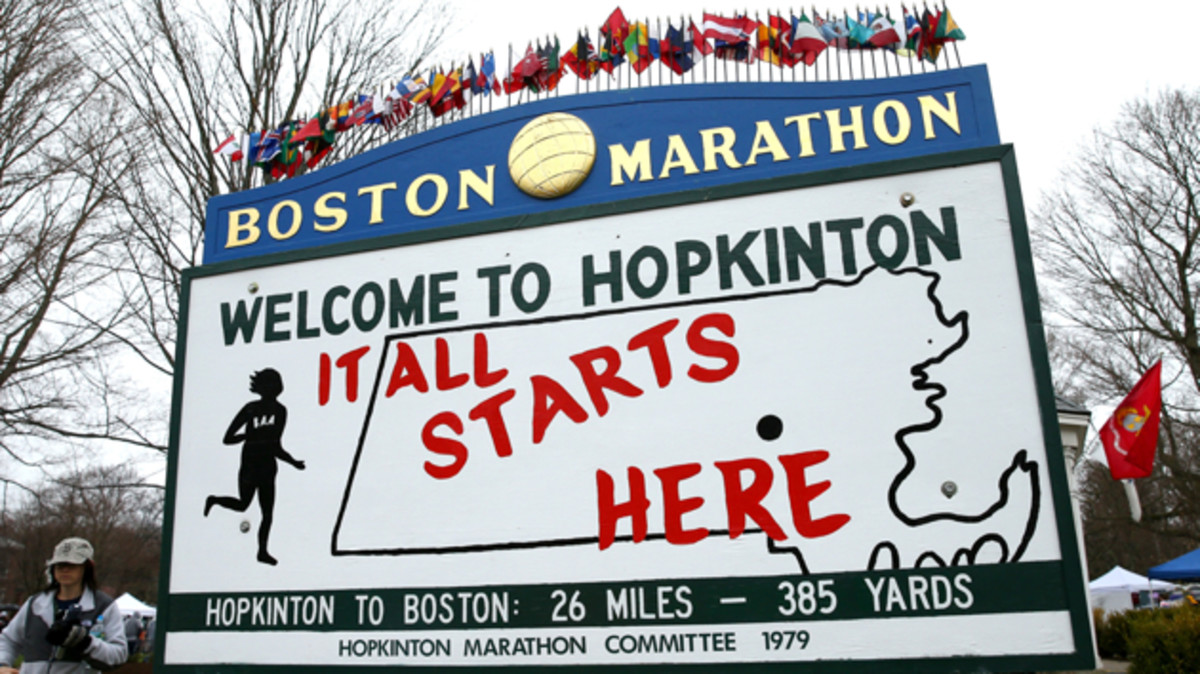
Getting off the start in Hopkinton
“The initial reaction when the gun goes off is excitement—you want to get going. Take a deep breath. Make yourself run slower than you think because you’re going to end up running faster than you think. There’s a nice downhill to start but there’s actually a little flip of an uphill about 800 meters into the course. That always shocks you because everyone says ‘It’s completely downhill but there’s actually that little hill.’ However, you will scream as you go down that first 400 meters. Think about conserving your muscles because you don’t want to put damage on your quad muscles.”
Mile 1 to 4: Gradual downhill running
Watch: Boston Marathon documentary trailer released
“At this point, you’re on automatic pilot. It’s super exciting and you don’t feel like you’re running the marathon yet. There are lots of people cheering and it’s easy to get caught up in fast paces but it’s an important time to hold back and hopefully your breathing is super easy. Tune out and go through the motions. You don’t want to invest time thinking into what you’re doing quite yet because it’s going to get harder and you’ll need to tap into your mental toughness. Ideally in Boston, you don’t want your first half to be faster than your second half.”
Miles 4 to 12: Fairly flat with gradual rolling hills
“This part rolls down and then gets pretty flat. Consider it as a preparation spot. You’re preparing for the hills. You know they’re coming so embrace the flatness. Savor it. You’re going to have to have some serious energy reserves to get up through those Newton Hills.
Mile 12.5: Approaching the half and the “screaming tunnel” by the Wellesley College women
“Remind yourself about delayed gratification. At that point in the race, it’s easy to let your emotions run wild. The screams are deafening. My heart rate always tends to get higher every time I pass the Wellesley women. There’s so many checkpoints of inspiration on the course and you can keep that in mind.”
Mile 13.1 to 15: The transition into the hills
“The roughest transition for me is going down the Newton Lower Falls and then into the hills. It’s a really tough part of the course that tends to shock people. Use the momentum from the Wellesley girls to get you through that section and then get ready for the inevitable tough running in the sections ahead.”
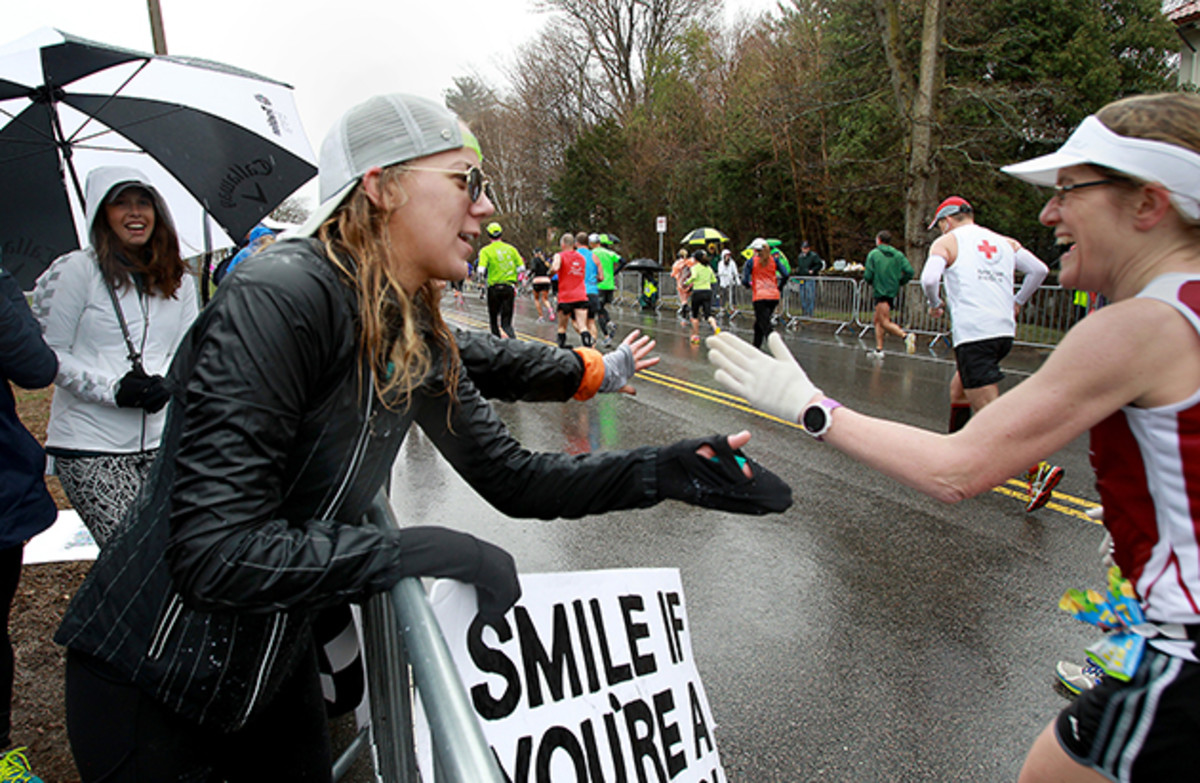
Mile 16: The race begins
“With the pounding of the Newton Lower Falls and how steep it is, up the hills into Newton is where the race begins. The good thing about the hills is how tough and challenging they are but there is some reprieve in there. There are some flatter sections in there to prep you for the next hill. It’s continuous and requires a lot of focus. The fans are really thick in that area. There are throngs of people. There’s grilling going on. People took time to write messages on the pavement. It’s fun to run along and see them.”
Training tip: How to mentally break down the hills
“Sometimes I just think how many minutes it will take to go up a hill. I’ll tell myself ‘OK. You’re going to really have to commit to two minutes of hard running here and then you get a little bit of a break and reward yourself.’ That helps break it up. It makes you dig a little deeper and not make you feel so hard on yourself.
Mile 17: Turning onto Commonwealth Avenue and getting ready for Heartbreak
“There’s not many turns on the course so it’s a significant thought. You make that right on Commonwealth Ave and pass the fire station. It’s an inspirational point. They always have a huge crowd there. This is what people are preparing for mentally. Now you have to switch gears and tell your body to use different muscles. It’s tough to flip over to uphill after you’ve been doing so much downhill running. The fans are really intense. It’s a major marker and it’s one of my favorite spots on the course.
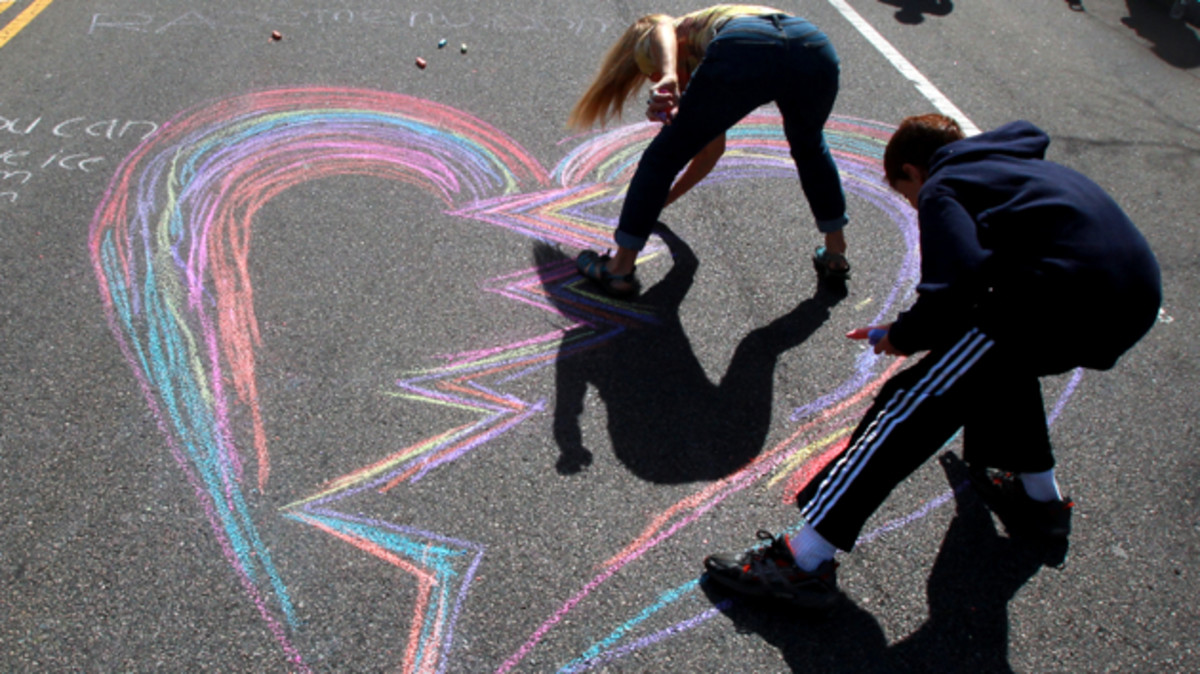
Mile 20: Heartbreak Hill and saving energy
“There’s not much saving going on, to be honest. You just have to attack each hill and tell yourself that ‘You’ve got this and you’re tough.’ The good part is that it’s the final major hill. It’s just like Mount Everest. Once you’ve conquered it, then you start to make your way down into the city. There’s a huge sense of accomplishment once you’ve made it through the hills and that’s a major motivating factor. Boston is a super challenging course and you know you’ve accomplished something by getting to the top of Heartbreak.
Mile 21: Boston College and running downhill again
“This is the next hardest transition since the Newton Lower Falls. I always think of my grandpa because he went to Boston College and I try to use that as motivation. You try to open up the legs and let yourself roll down the hills. This is when people start to feel the wobbly quads as you try to run downhill again. You have to embrace it. Lean forward into the downhill and let the legs roll forward. If you’re trying to run for a specific time, this is where you really need to work and press. After the top of the hill all you want to do is take a break, but you need to dig deep.”
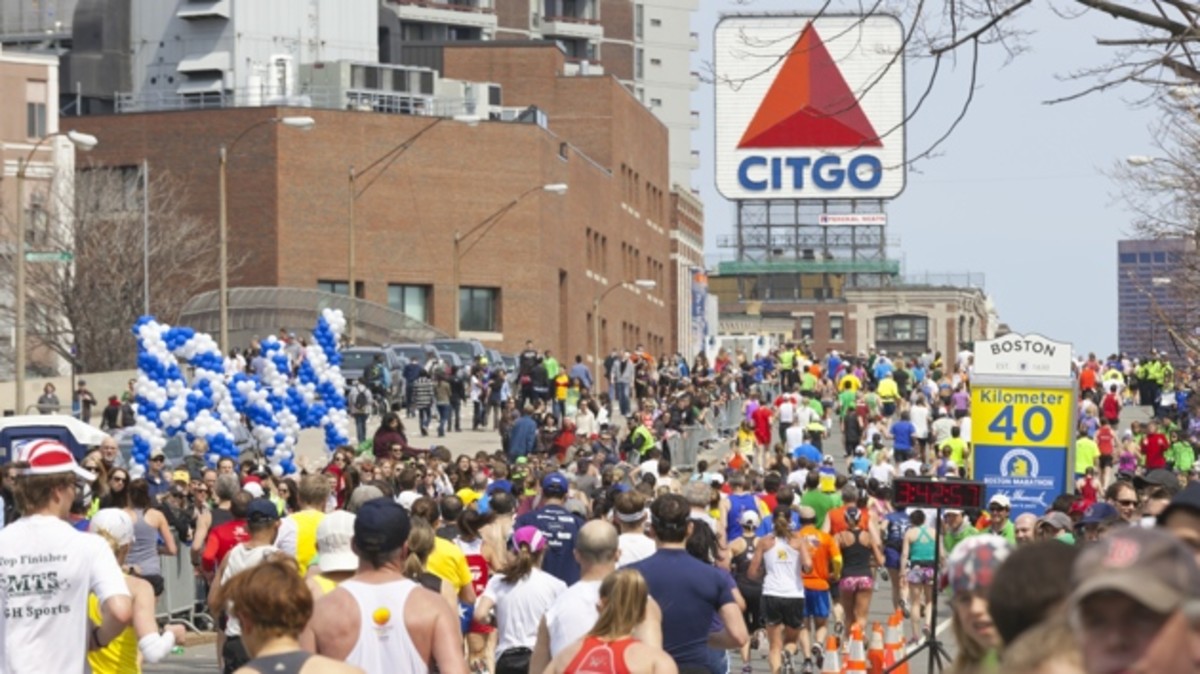
Mile 23 to 25: Painful downhill running as the CitGo Sign teases you
“Even when you hit the CitGo sign, it just seems like a really long march to get to the finish line. You can see it from quite a bit away and it’s a great landmark to keep in mind but then you start to think, ‘This doesn’t seem to be getting any closer.’ Once you hit it, you know you’ve got a mile to go, which is a great feeling.”
Mile 25: Don’t forget CitGo Hill
“My dad had run Boston and he warned me about this little nub of a hill. It’s really not significant compared to the other hills on the course but because of where it is placed, it’s a stinker. I have numerous times wished that part of the course was erased and they can somehow make that flat. I think everyone can be feeling pretty good but that last little hill hurts. You’re just feeling everything including each divot in the road at that point. My dad warned me and I remember thinking ‘My dad was right’ in my first run in Boston.”
Finish strong: Right on Hereford, left on Boylston
“You’re lucky if you have a lot left. Most times, I haven’t had much left in the last 800 meters to go. This is the time where you soak it in that you’re running the Boston Marathon and you’re a piece of history. It’s elation. I don’t see anyone who is not excited to get to that point in the race. You’ll get chills. People will cry out of pain and happiness or a mix of both. It’s magical. Because you want to savor it, it’s a mix of getting there as fast as you can and also taking it in because it’s so cool.”
Scenes from the Boston Marathon
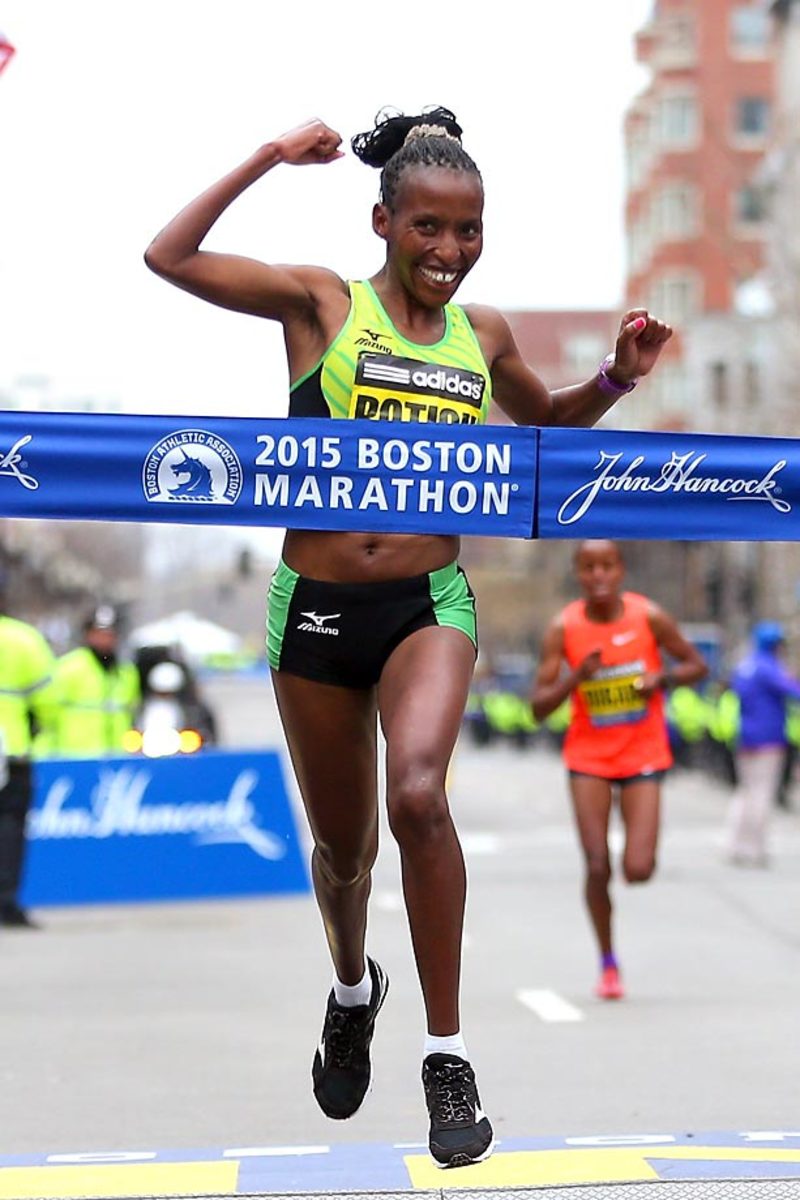
Here are some scenes from the 119th Boston Marathon, where Lelisa Desisa won for the men, and Carolina Rotich for the women.
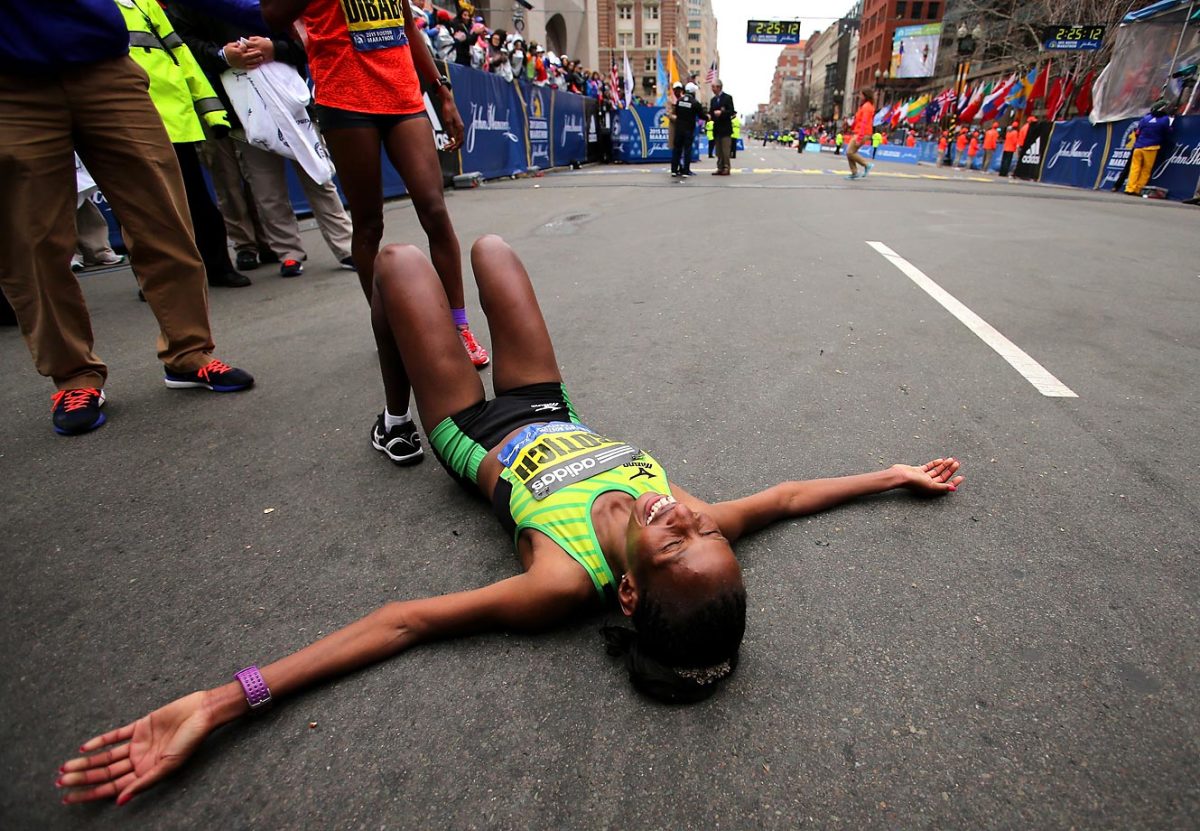
Caroline Rotich of Kenya.
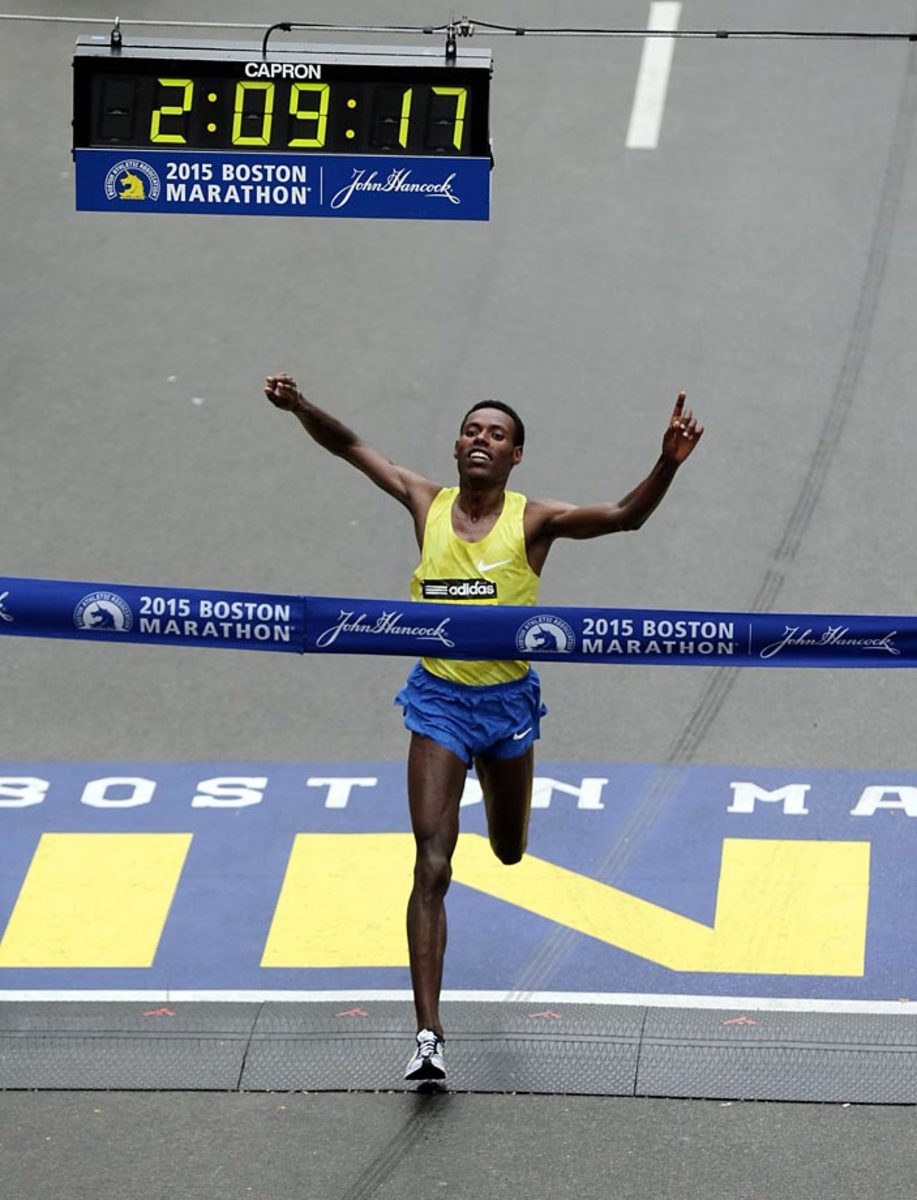
Lelisa Desisa of Ethiopia.

Lelisa Desisa of Ethiopia.
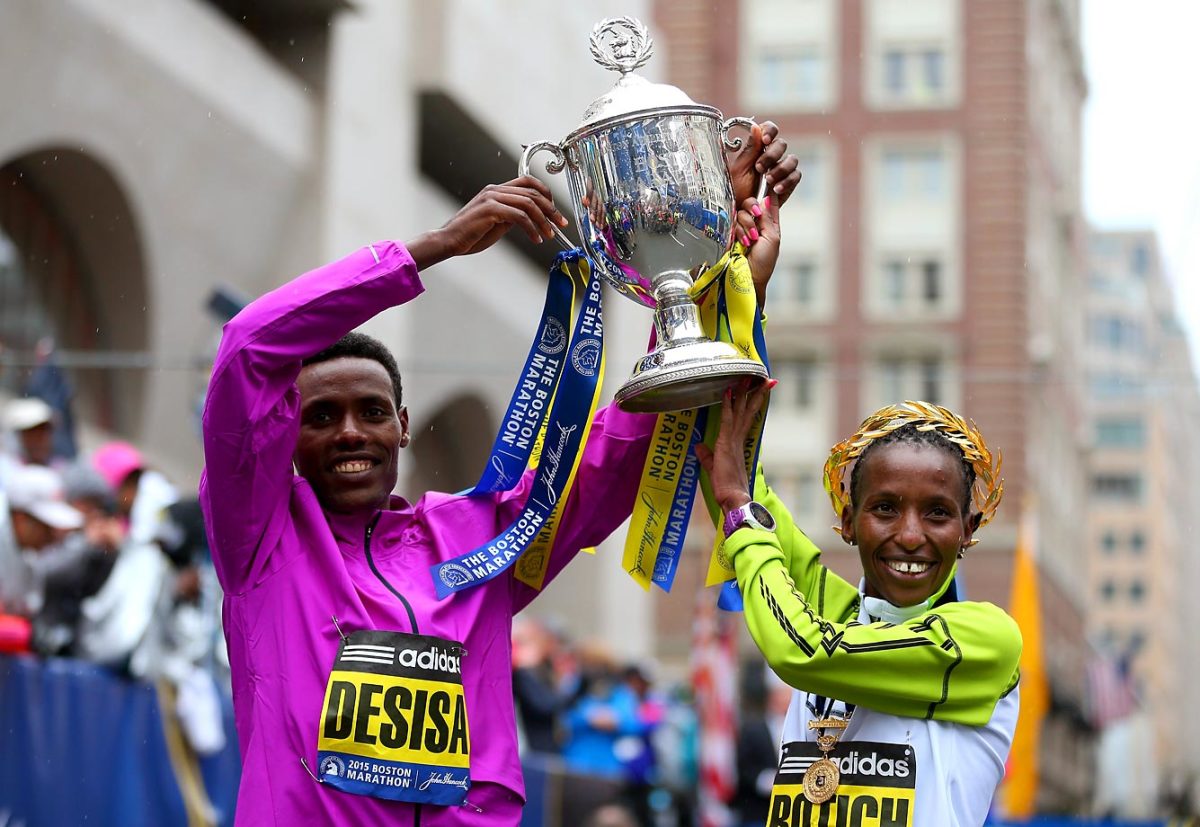
Lelisa Desisa with Caroline Rotich.
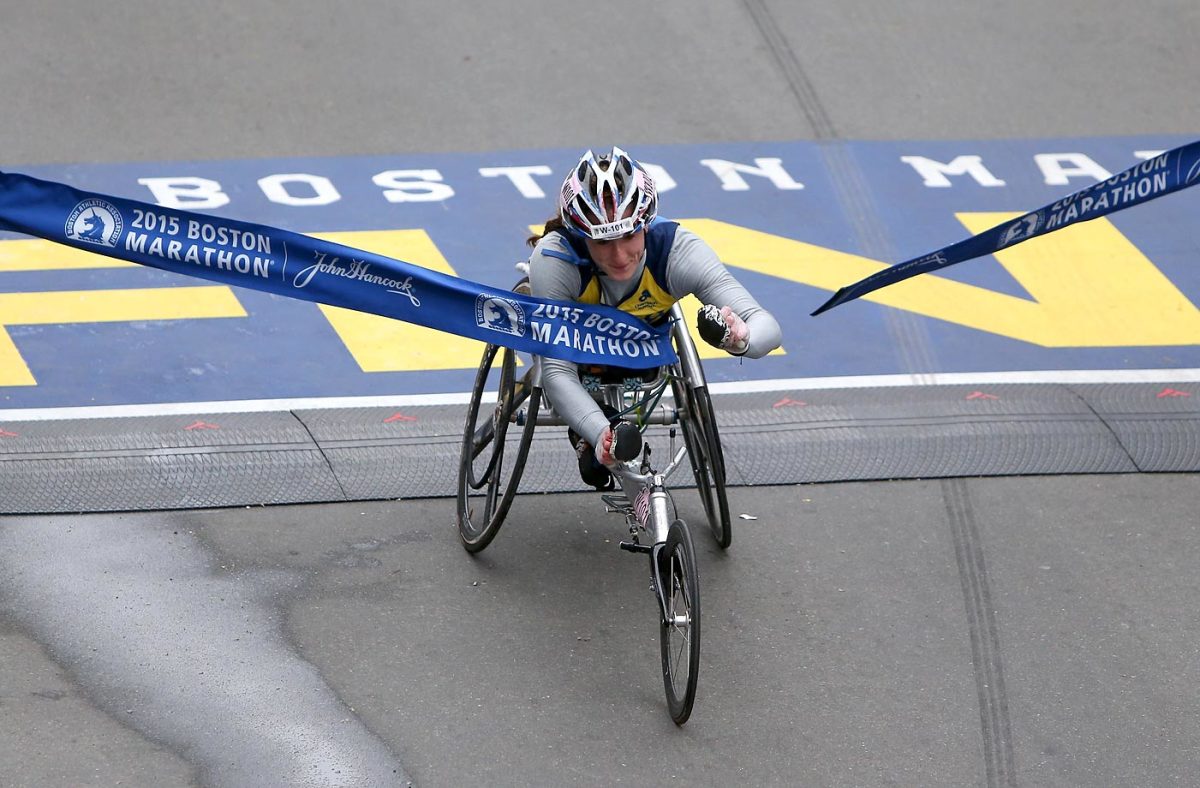
Tatyana McFadden of the United States crosses the finish line to win the women's push rim wheelchair division.
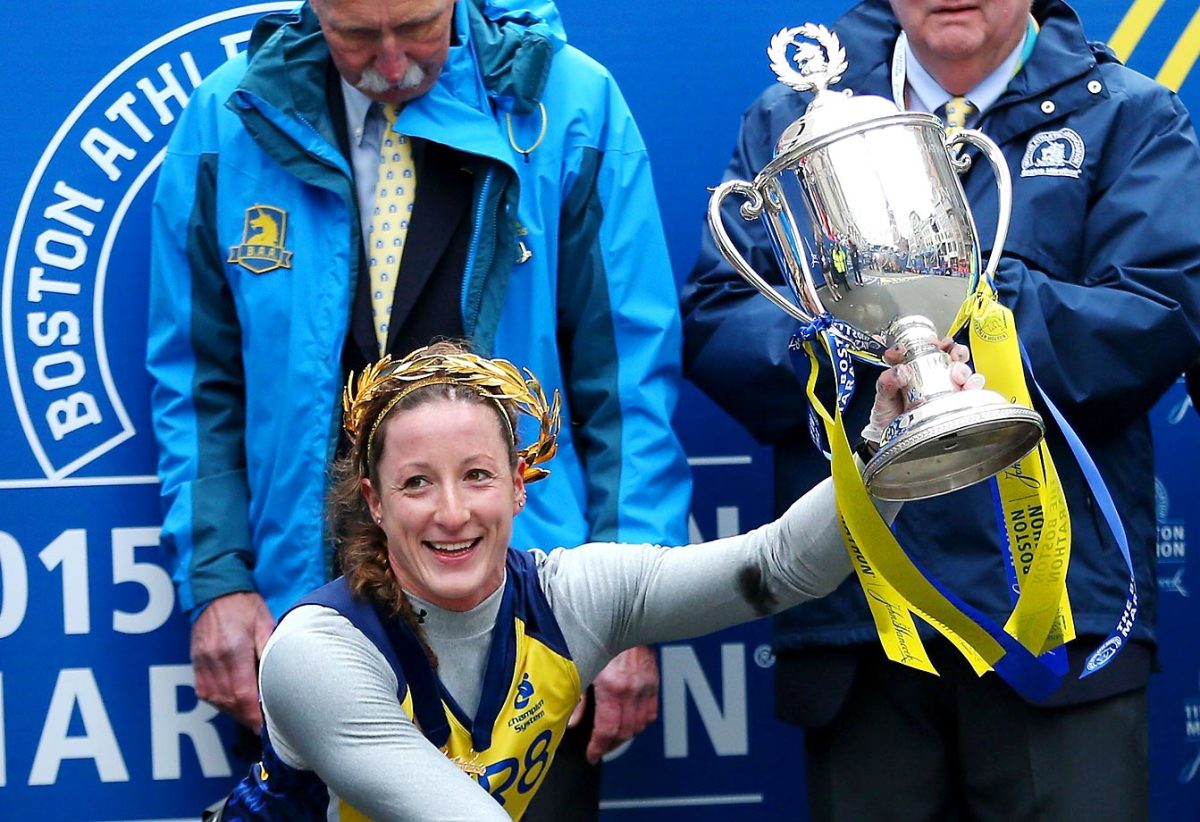
Tatyana McFadden wins the women's push rim wheelchair division.
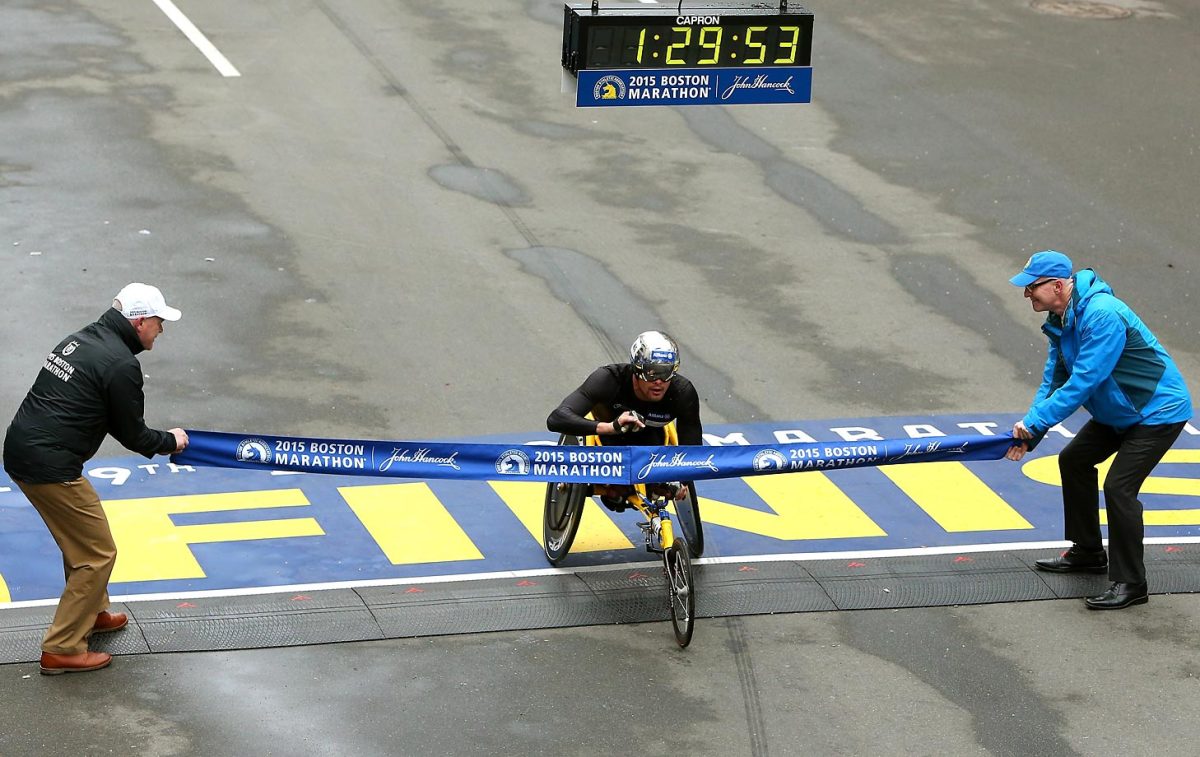
Marcel Hug of Switzerland crosses the finish line to win the men's push rim wheelchair division.
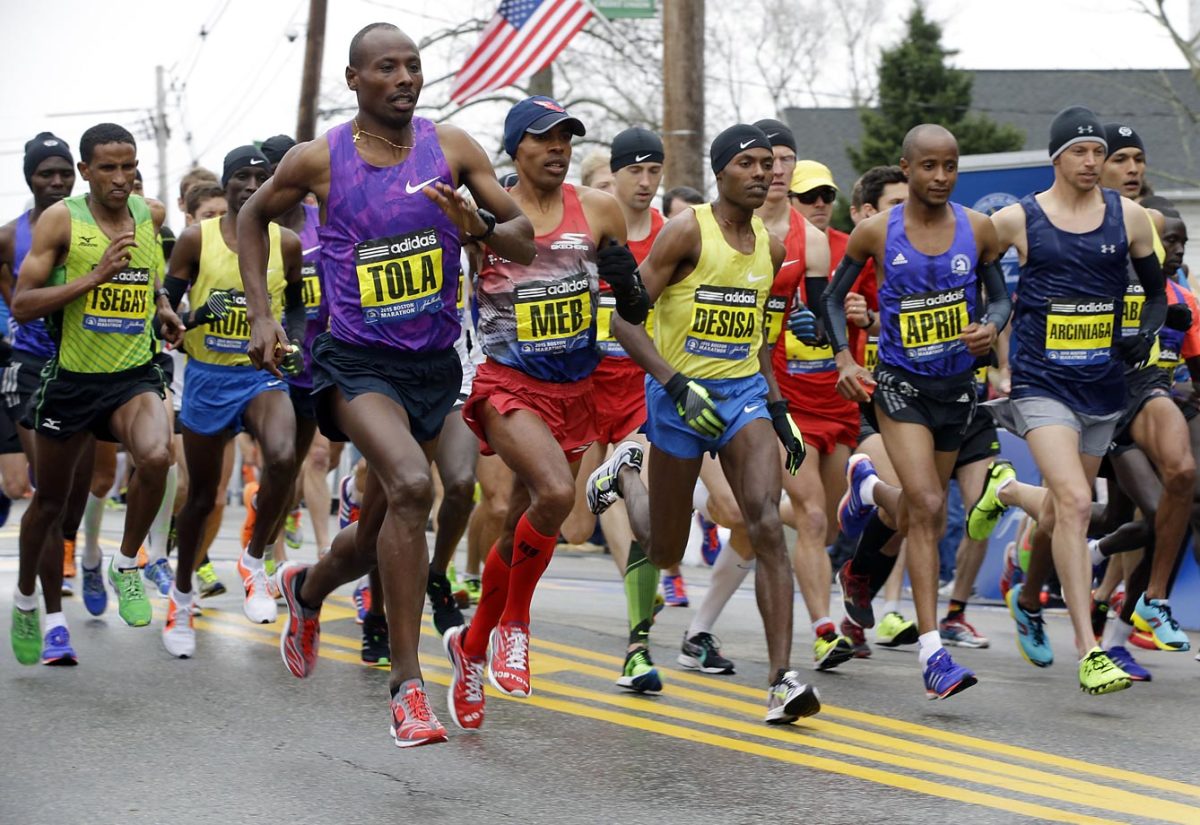
From left, Yemane Adhane Tsegay of Ethiopia, Wesley Korir of Kenya, Tadese Tola of Ethiopia, Meb Keflezighi of San Diego, Lelisa Desisa of Ethiopia, Lusapho April of South Africa, and Nicholas Arciniaga of Flagstaff, Ariz., leave the start line.
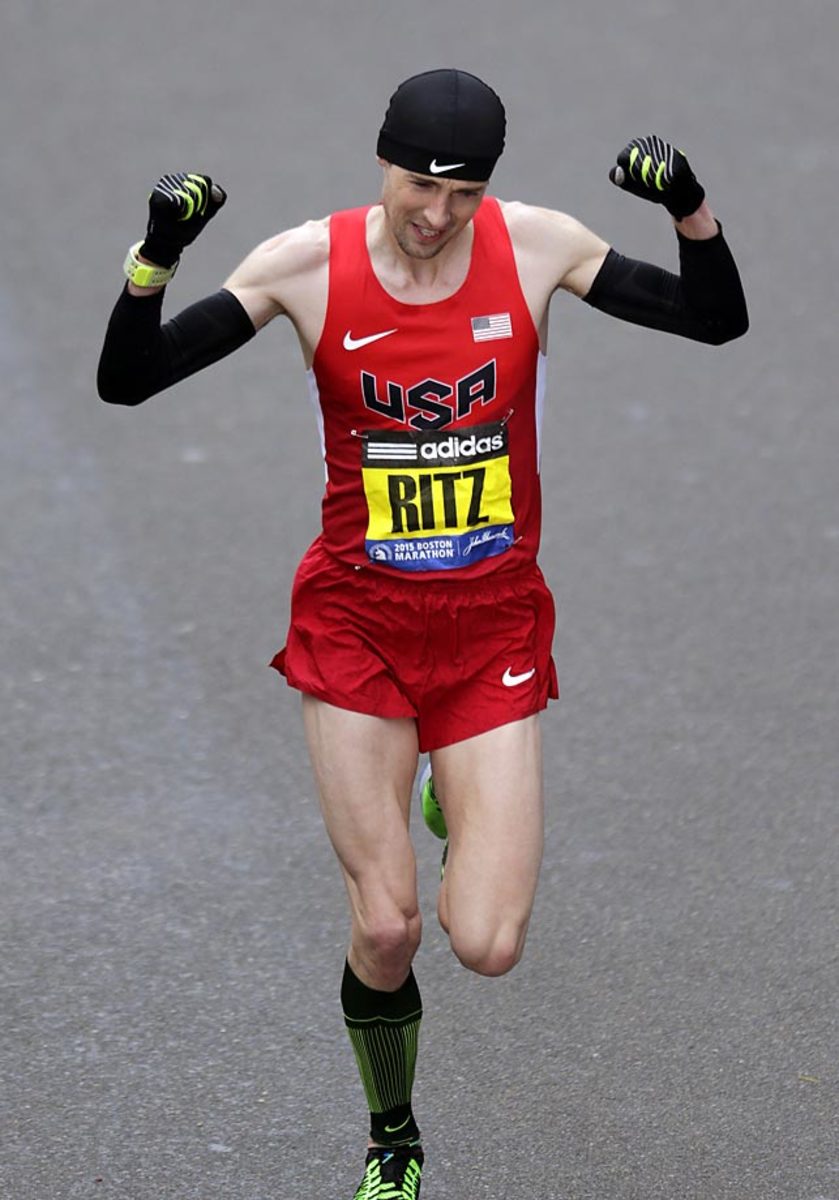
Dathan Ritzenhein, of Rockford, Mich., finished seventh overall in his first Boston Marathon. He was the top American finisher.
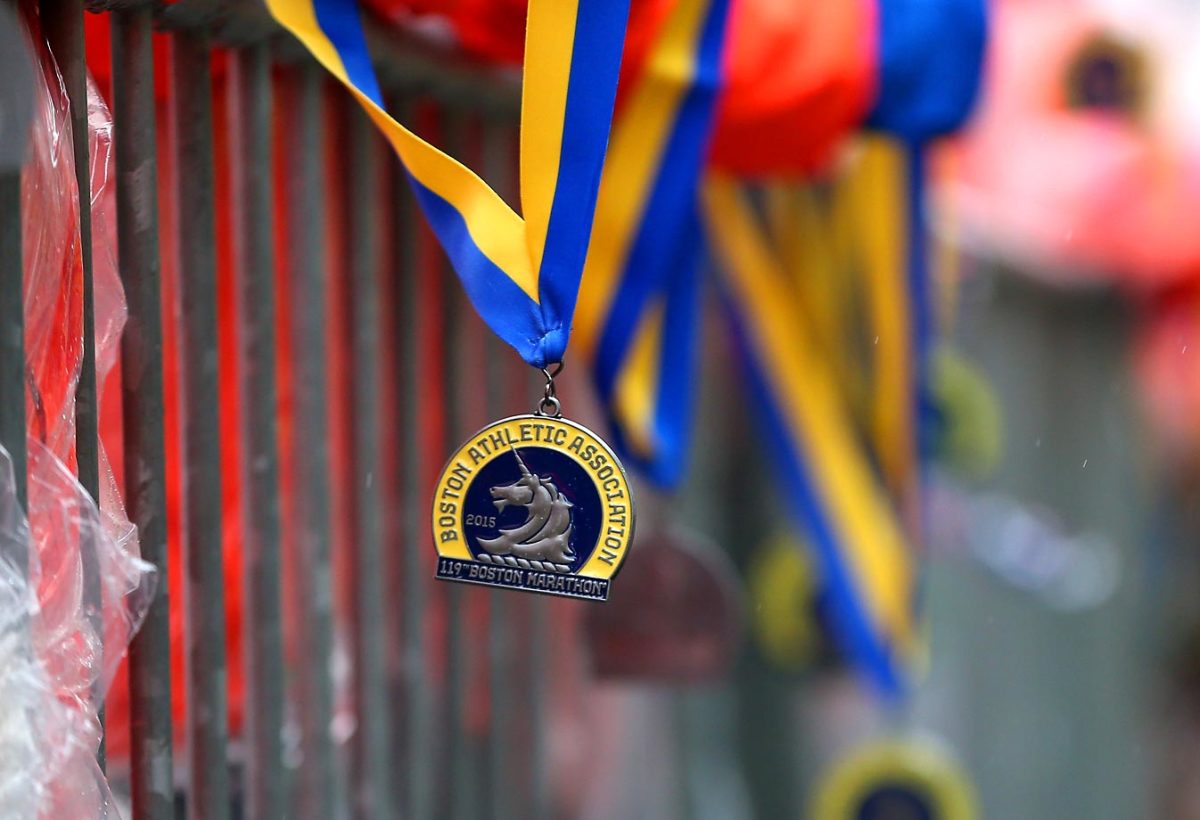
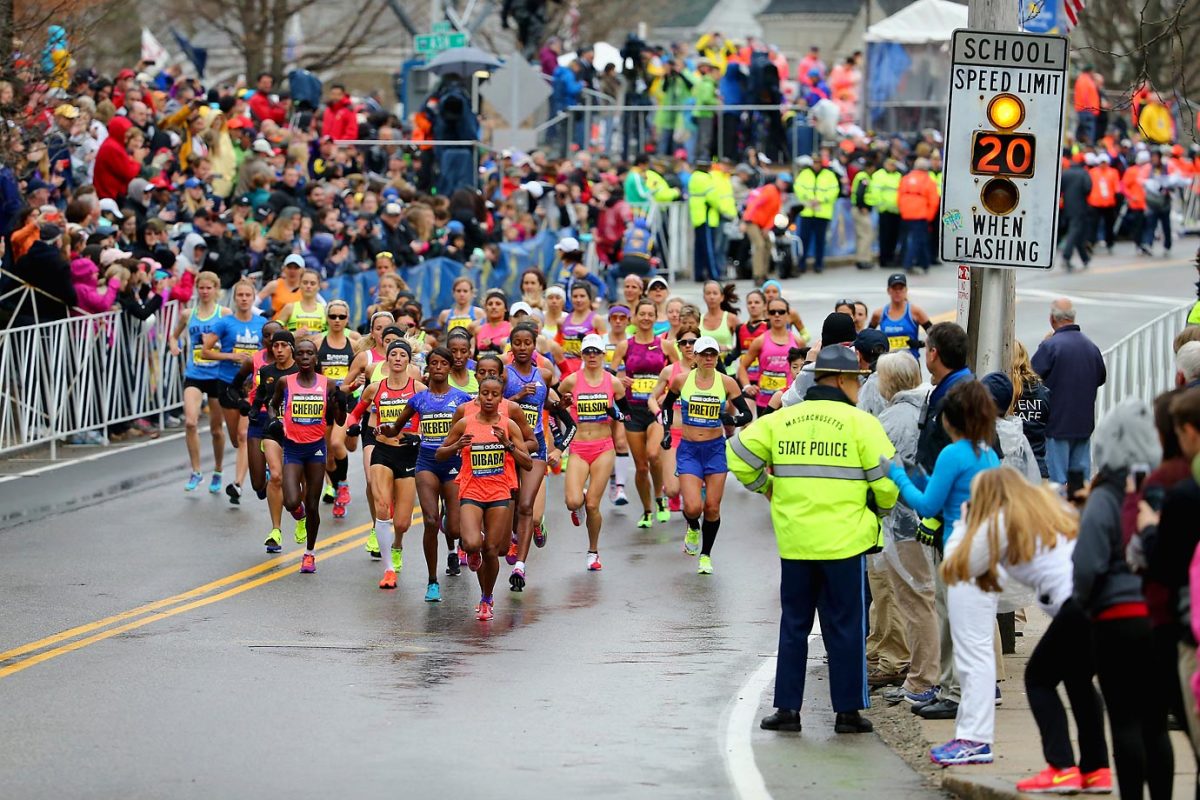
The Elite Women, led by Mare Dibaba of Ethiopia.
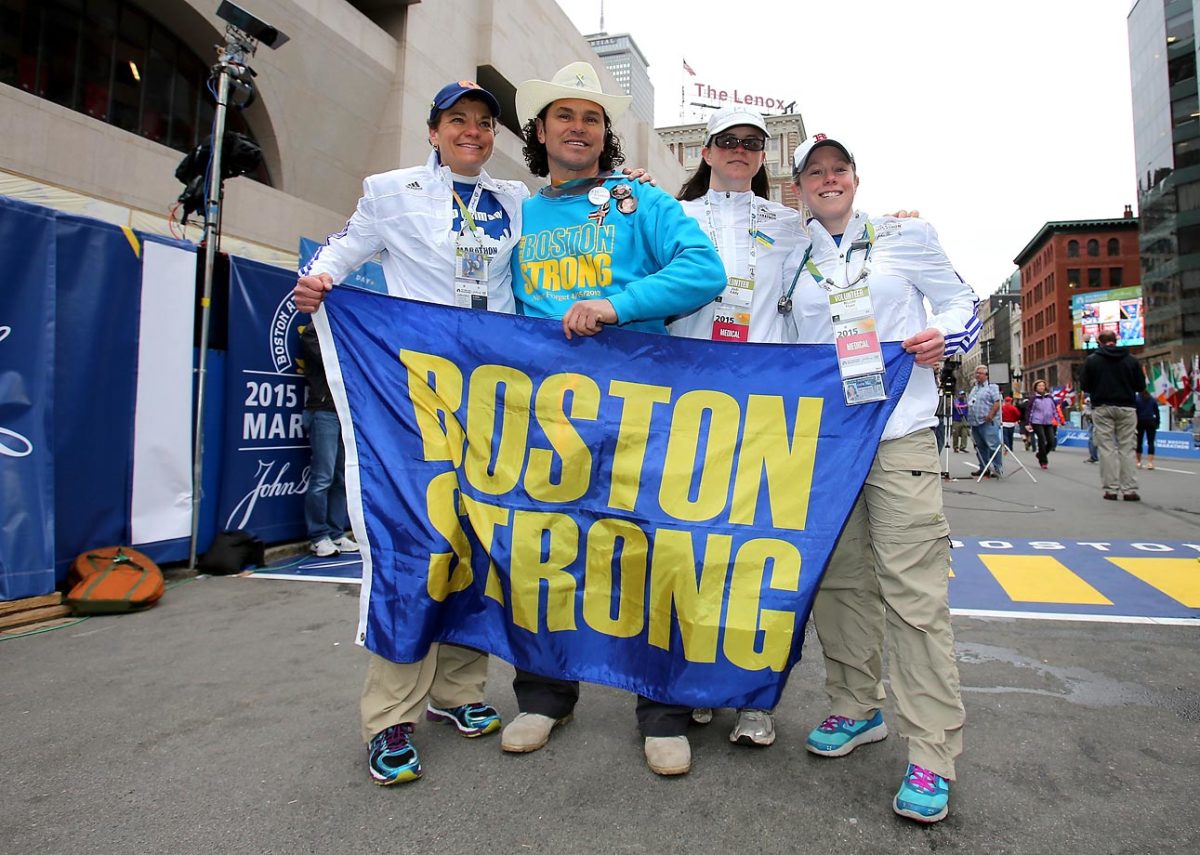
First responder Carlos Arredondo poses at the finish line before the start.
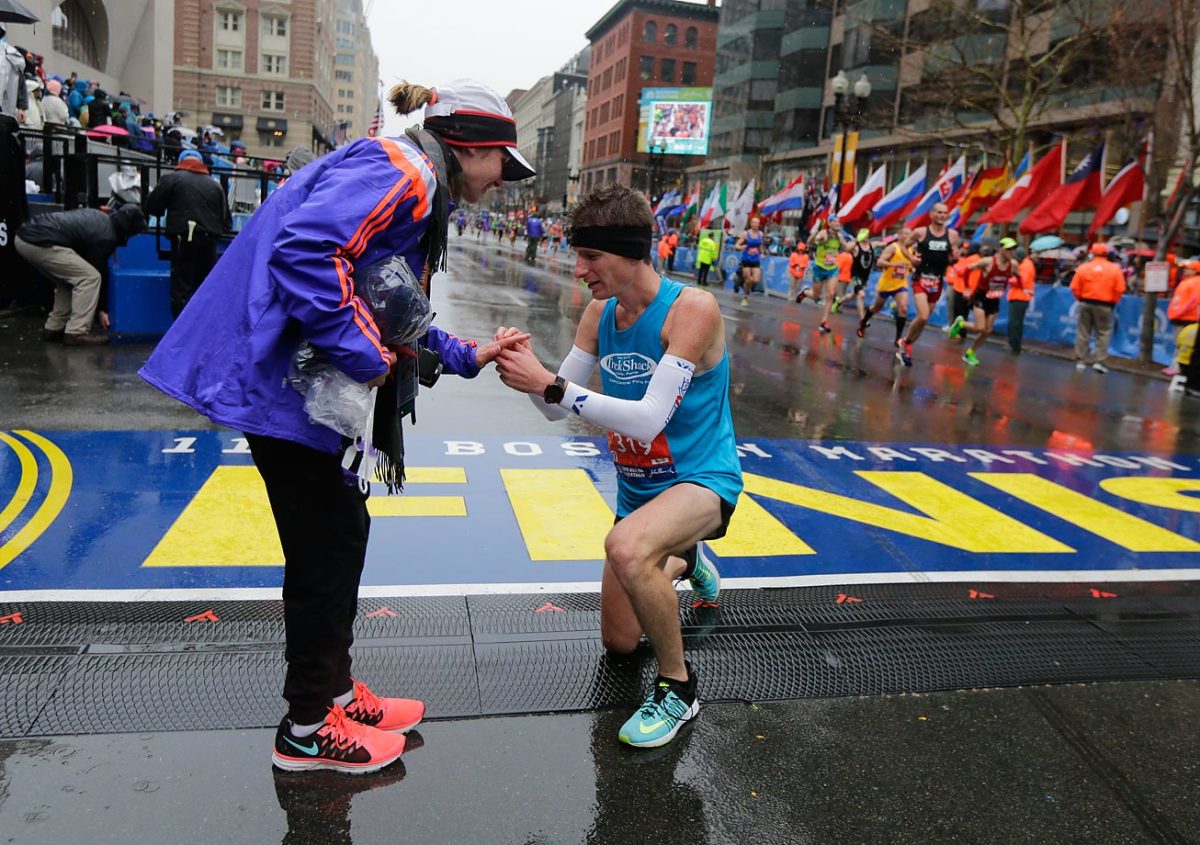
Dustin Hicks proposes marriage to Laura Bowerman after crossing the finish line.
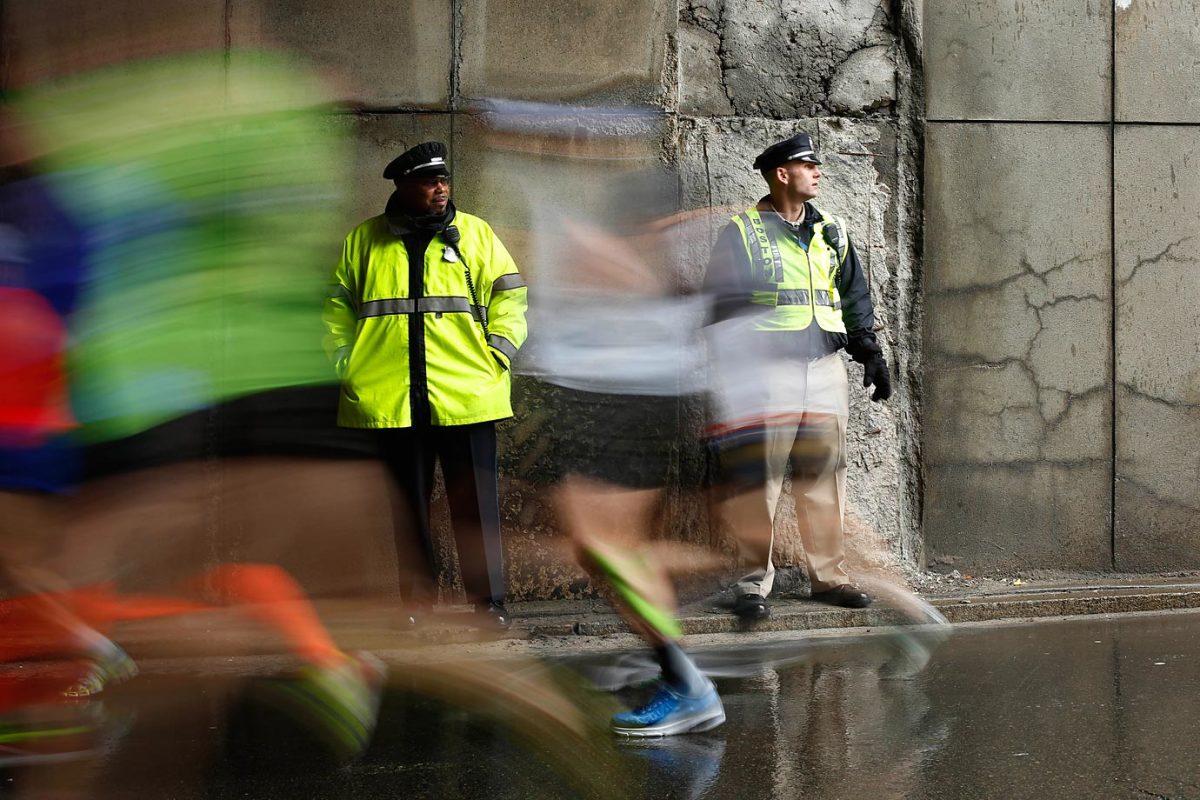
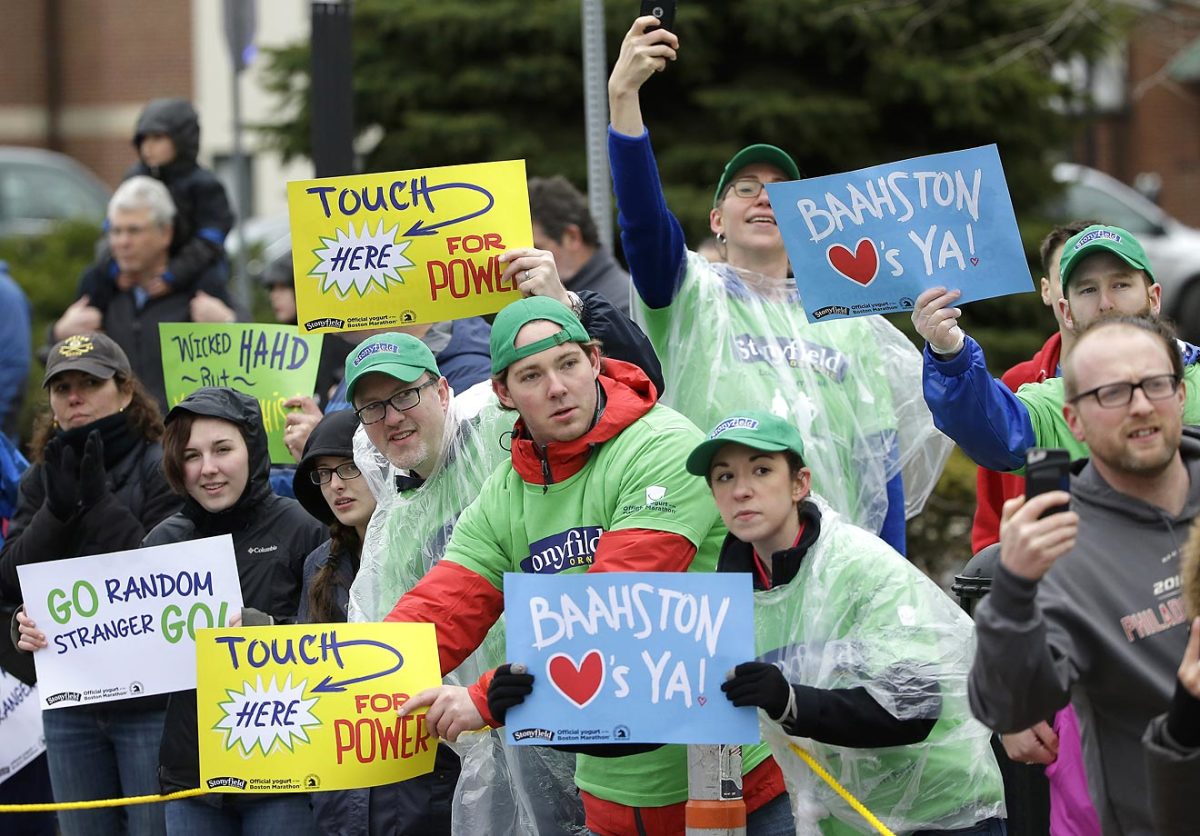
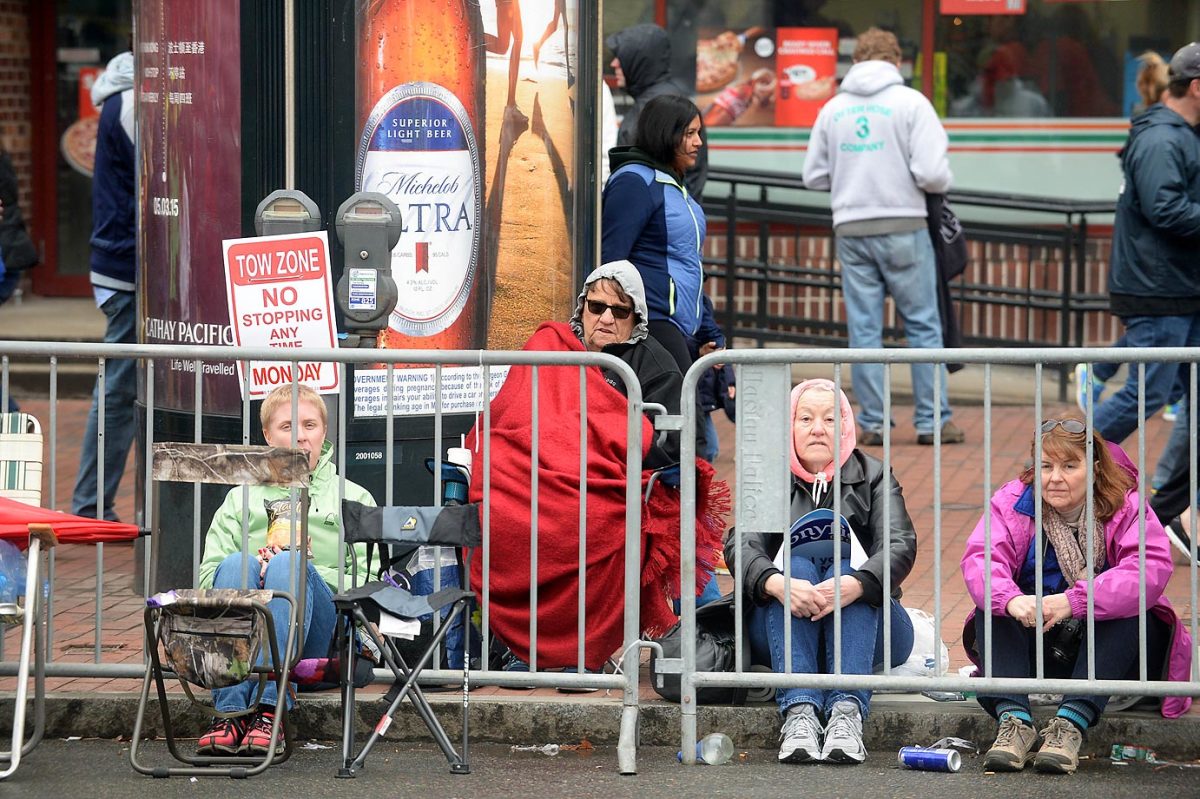
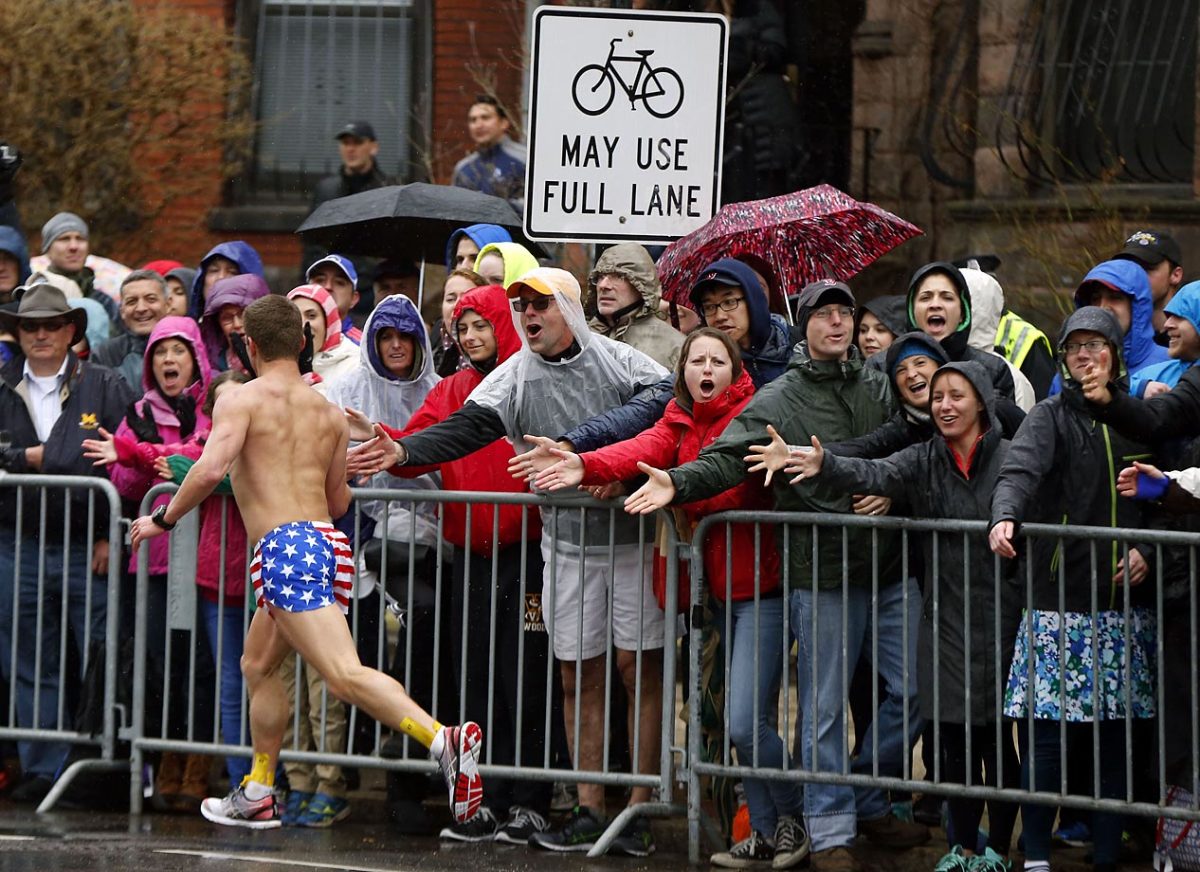
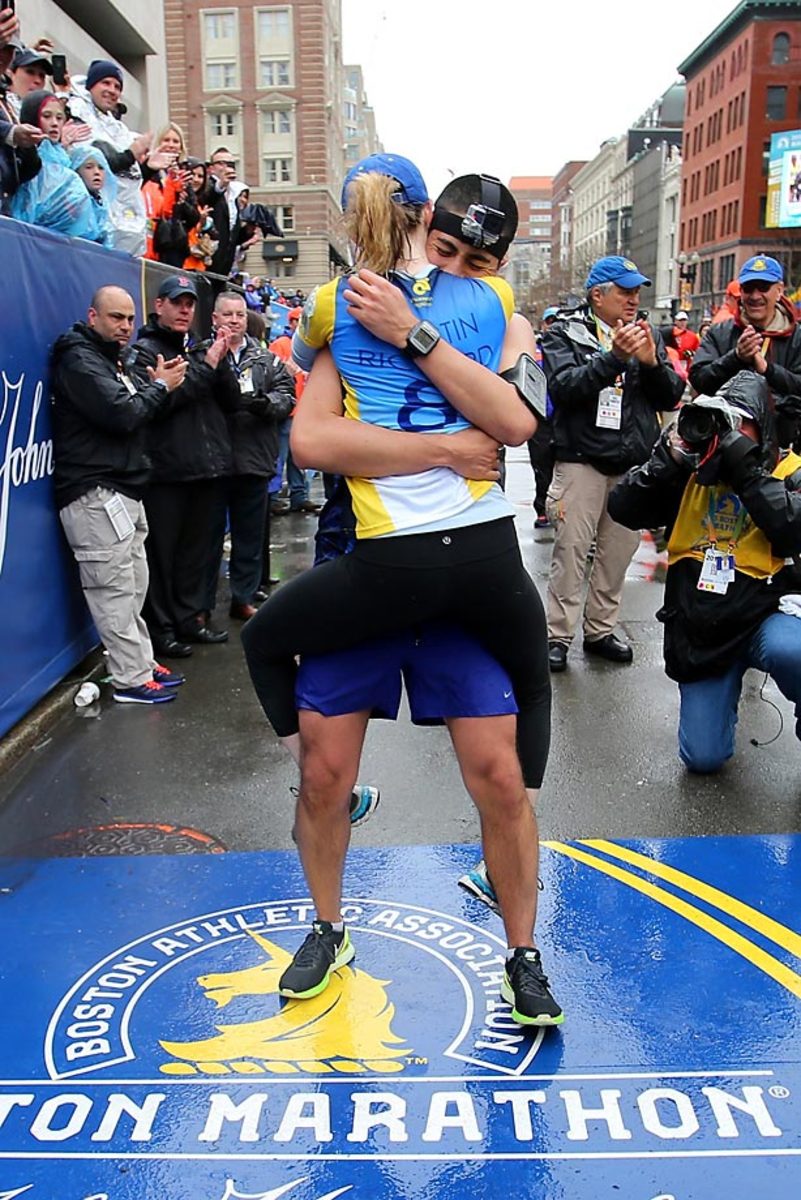
Mayoral Chief of Staff Daniel Koh and runner Amy Sennett celebrate after getting engaged at the Finish line.
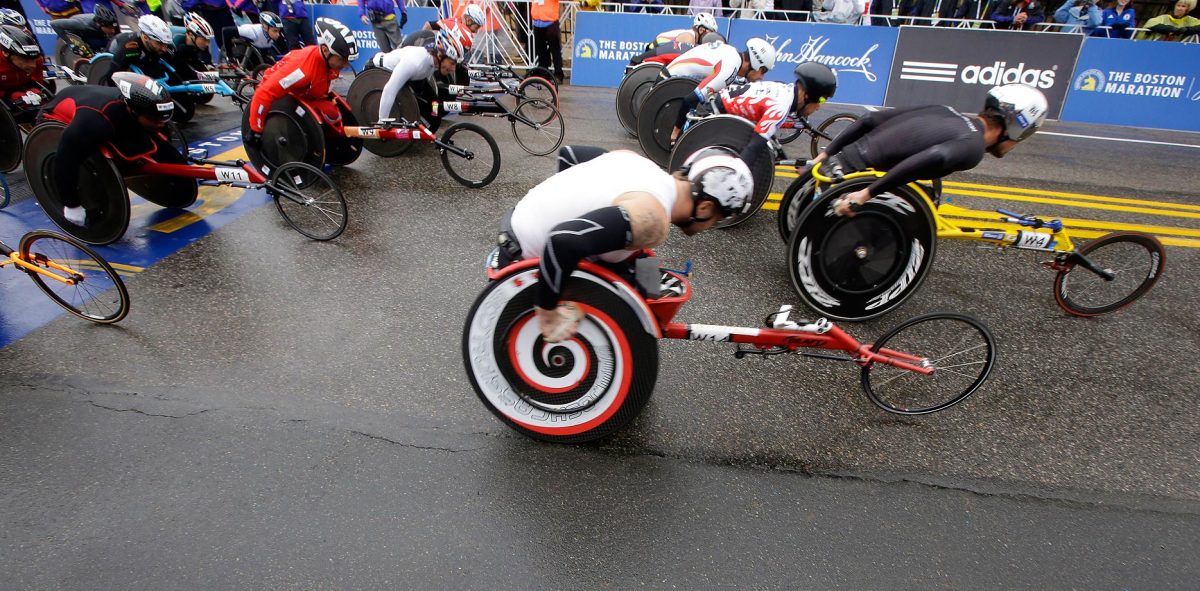
Ernst Van Dyk, foreground, of South Africa, leaves the start of the wheelchair division.
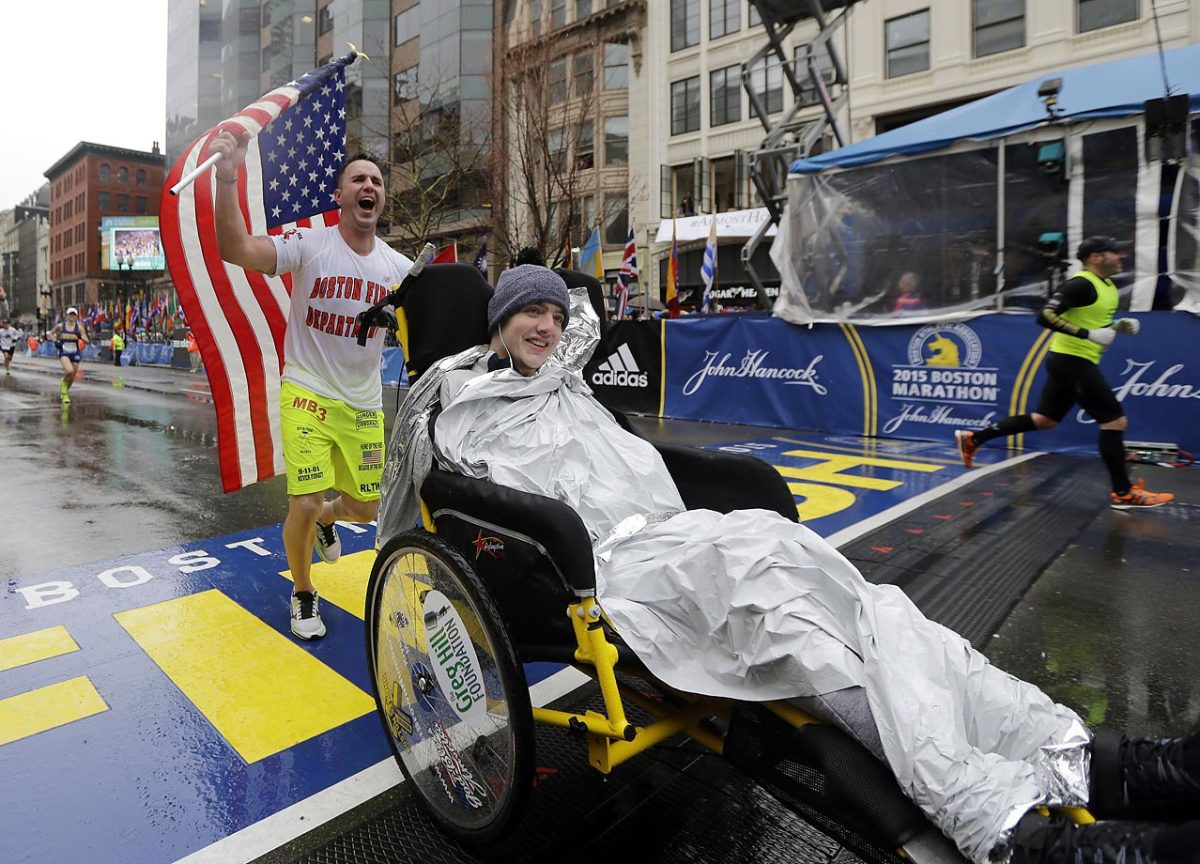
Lucas Carr pushes Matt Brown over finish line.
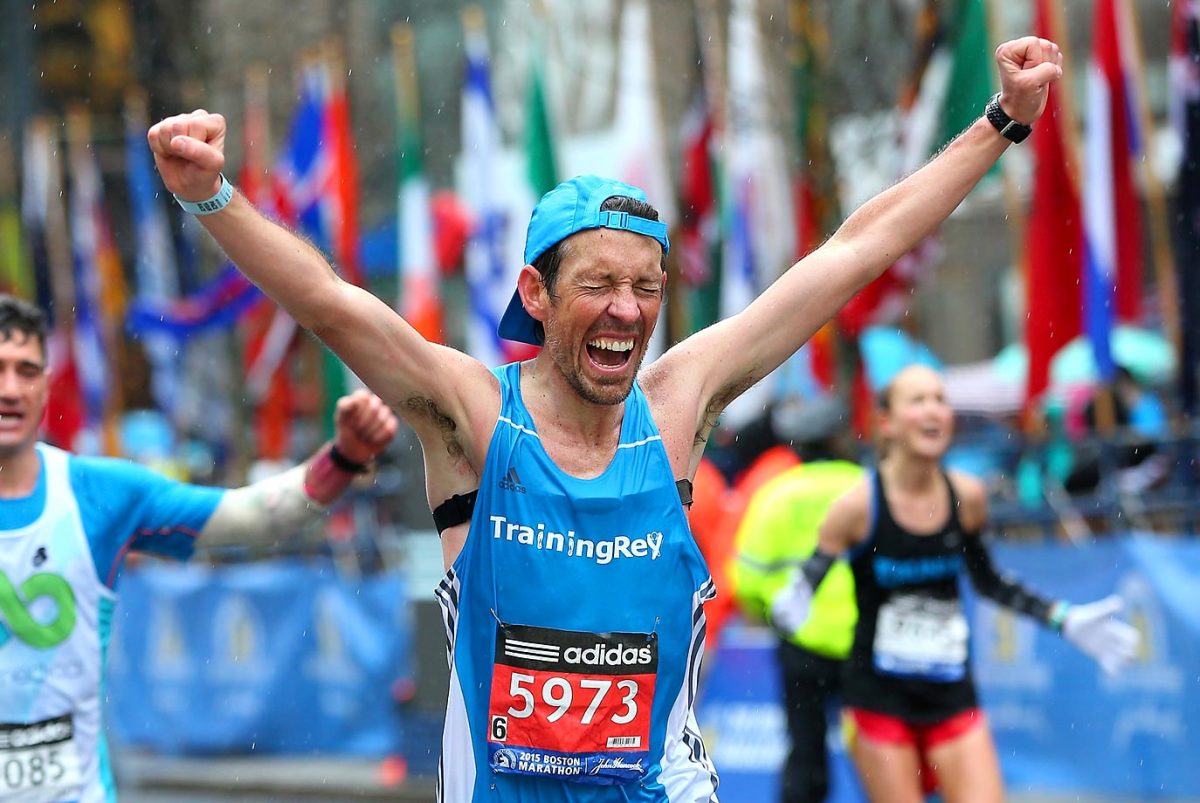
More training tips from Flanagan
Christopher Chavez: What are the go-to meals in the days leading up to the race? Does carb-loading happen over a span of days or piled up the night before?
Shalane Flanagan: “I don’t load up too heavy the night before. I do have a recipe inspired by the Boston Marathon for Marathon Lasagna. The night before the race, John Hancock tends to serve what I would consider a Thanksgiving dinner with mashed potatoes, sweet potatoes, stuffing, salads and turkey. In my lasagna, I’ve got sweet potatoes in there as well as ground turkey. It’s super tasty and that’s one of my favorites.
‘Boston Strong’ message unveiled on Boston Marathon route
In the last four days, I like to incorporate a couple more snacks that are carb-heavy but I don’t try to gorge all in one meal. During training, I don’t massively carbo-load. The night before I’ll eat some type of protein, a salad and maybe some kind of bread.
On race day, I’m a big fan of oatmeal for breakfast. I’ve got my own oats that I bring to my hotel and prepare in my room if I have to. They’re Irish oats with some creamer, fruits and bananas. It’s hearty and filling. I’ve also got these muffins called “Superhero Muffins” and they’re called that because they’re made with almond flour, maple syrup, zucchini and carrots. You’re getting a dose of veggies and nuts while also free of refined sugars. They’re really nutrient-packed with this heartiness that doesn’t make you super full.”
CC:When it comes to drinking on the course, how do you know when your body needs water or sports drinks? Is there such thing as too much?
SF: “The key is to drink often and early. You don’t want to skip stations at the beginning and think ‘Well, I’m not thirsty.’ It’s almost like you need it in anticipation knowing that you will be need the carbohydrates because you will be depleting your glycogen. The best protocol is to drink every three miles. Drink until you can tolerate it. If sports drinks are too heavy, water is the next best option. You want to be taking in gel or sports drinks earlier than later because you need time to process it.”
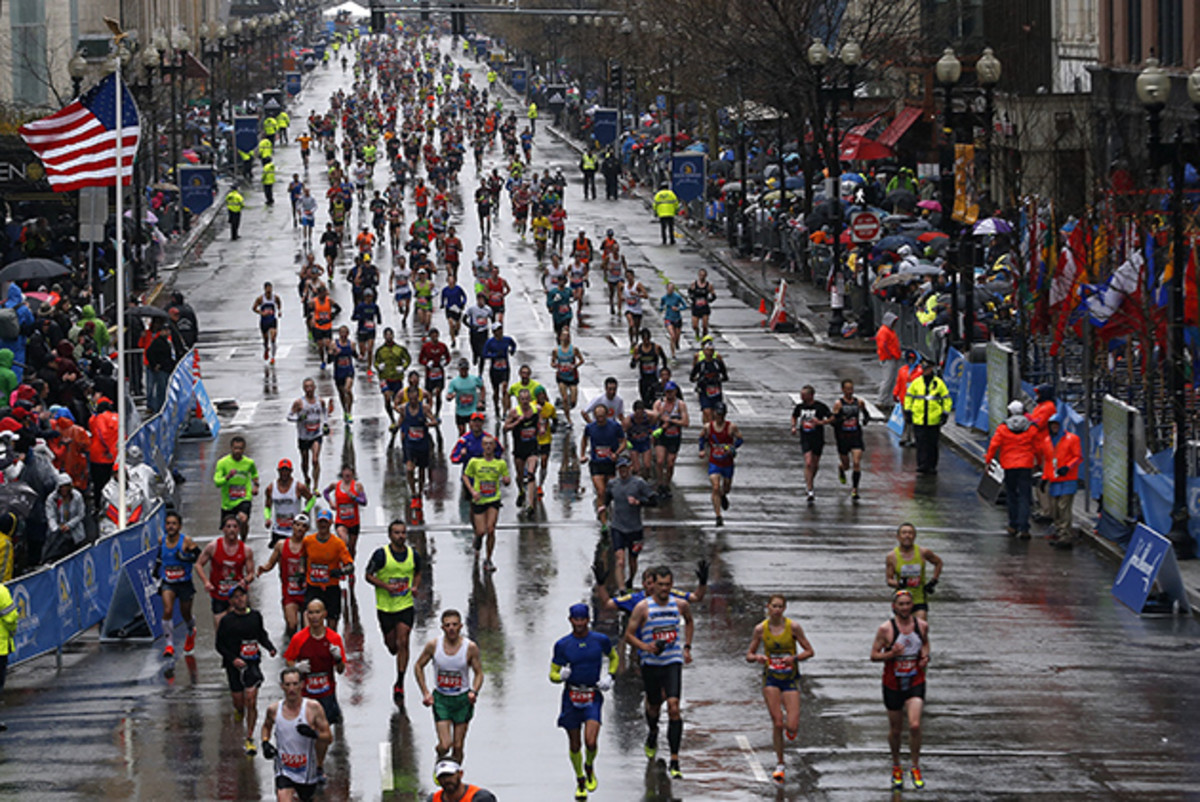
CC: If it’s hot, how can you stay cool?
SF: “It’s important to shade yourself as much as you can. I’m a big fan of the visor or the hat. I wore a visor at the Olympic trials because it was really warm and I wanted it to evaporate from my heat. I also wanted people to dump water on my head and it would help cool down my core temperature. Sunglasses help cool your face as well. If there’s sponges, ice or towels along the course, you can always grab those and throw them into your shirt. Holding them in your hands can also cool yourself down. Try not to get sunburnt so apply a light layer of sunblock that morning so that you don’t burn and dehydrate at the same time.”
‘Boston Strong’ message unveiled on Boston Marathon route
CC: How do you stay warm in a cool-temperature race?
SF: “I wear compression socks a lot because I like to keep my legs nice and warm. Your calf muscles need to fire at the end. If people are too cold, they can feel a little sting or tweak at the end. I try to stay covered up as much as I can before shedding layers as I go.”
CC: How to you guarantee a good marathon finish line photo?
SF: “I have yet to master that. In my last marathon, I basically collapsed and was not looking so good. I always just love the celebration of arms going up and tipping your hat to the event of the day.”
CC: In Berlin, you got a huge non-alcoholic beer after finishing third overall. How do you celebrate a great run in Boston?
SF: “I love a great post-race burger and beer. It’s my go-to for sure. Burger, beer and fries. If I’m craving sweets then I have to do a Dunkin Donuts donut.”
